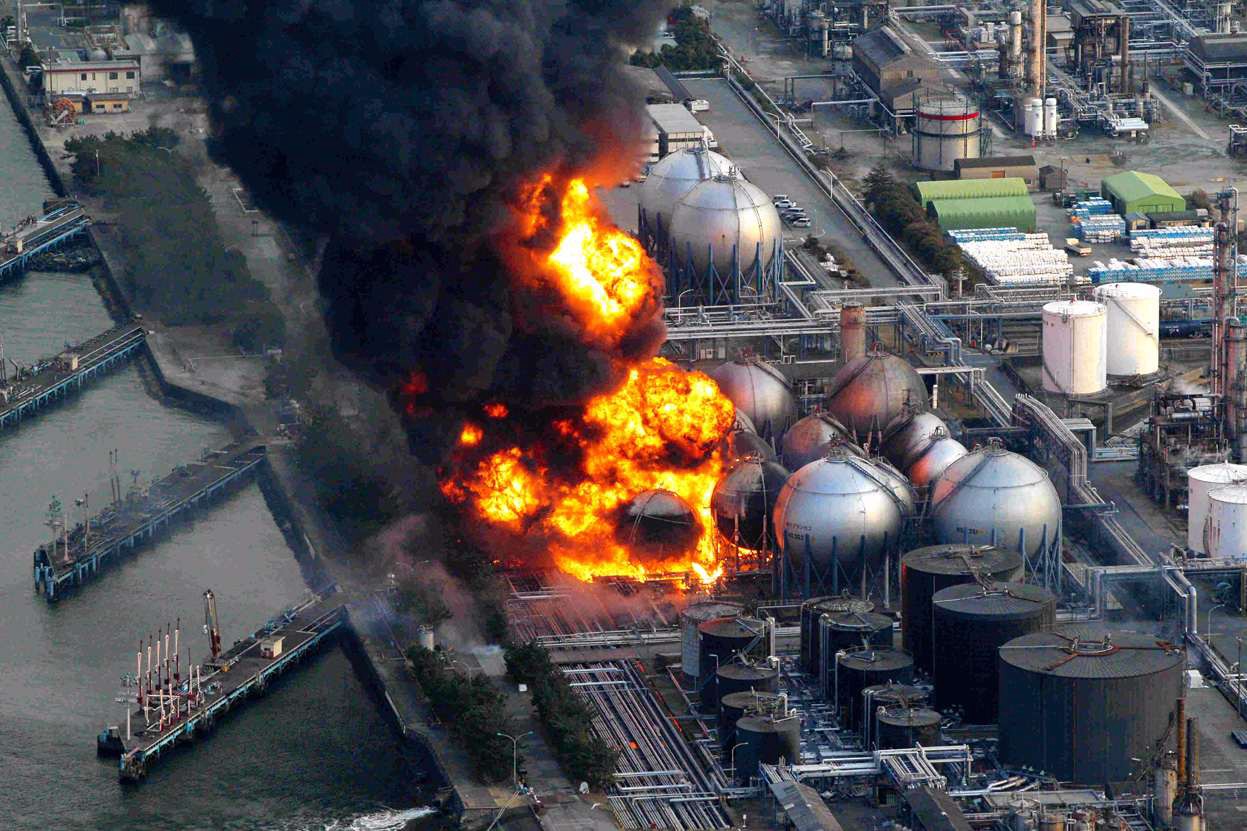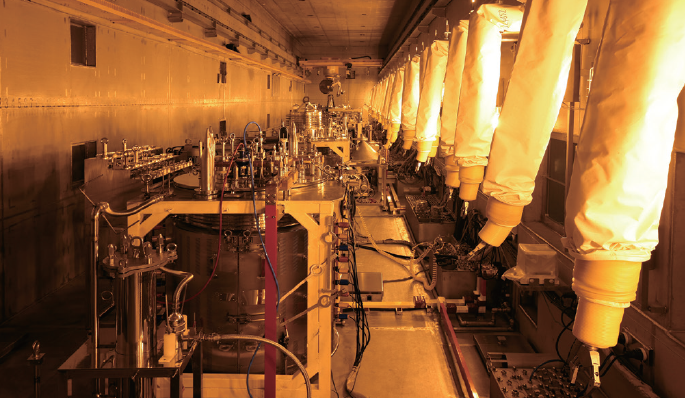Nuclear power plants are currently at the center of controversy. In particular, since President Yoon Seokyeol, who took office last month, announced in his election pledge to discard the nuclear phase-out policy of the former government. It is expected that this change will greatly affect society, especially the environment. Thus, the Sungkyun Times (SKT) will look into the concept of nuclear power plants, their problems, and possible solutions.
What Are Nuclear Power Plants?
Development of Nuclear Power Plants
Nuclear power plants refer to facilities that create nuclear power. Nuclear power is defined as the energy emitted when nuclear fission occurs, which is the splitting of a heavier atomic nucleus. Nuclear power plants are places where the process of manufacturing uranium, producing steam, and operating turbines are held to create such energy. Nuclear power was first studied for military purposes during World War II. After the war, Dwight Eisenhower, the former president of the United States, delivered the speech, Atoms for Peace, at the United Nations General Assembly in 1953. Here, he suggested that countries should peacefully utilize nuclear power. In 1954, the Soviet Union built the first nuclear power plant in Obninsk City. In 1957, the International Atomic Energy Agency (IAEA) was established to study nuclear power for energy development. According to the Operational Performance Information System for Nuclear Power Plant (OPIS), there are currently 441 nuclear power plants around the world, and they account for 10% of worldwide electricity.
Nuclear Power Plants in Korea
In 1958, the Institute of Atomic Energy Research was first established in Korea to develop nuclear power technologies. In 1978, the first nuclear power plant in Korea, the Kori Nuclear Power Plant, was built in Busan. According to the Nuclear Safety and Security Commission (NSSC), nuclear power plants provide 29% of electricity in Korea, and there are currently 24 active. Nuclear power plants are mostly used because of their economic benefits. In its 2020 report, the Projected Costs of Generating Electricity, the International Energy Agency (IEA) explained that the cost of generating nuclear power in Korea is ₩67,343, which is markedly lower than the cost of generating thermal power, ₩95,506, or that of photovoltaics, at ₩123,985. Despite this, there are several disadvantages to nuclear power plants, such as nuclear accidents. For these disadvantages, the former government had proposed a nuclear phase-out policy. Oppositely, President Yoon Seok-yeol strongly criticized and announced a stop to the phase-out policy and to look over the reconstruction of SinHanWool units three and four.

Should the Nuclear Phase-out Policy Be Discarded?
Environmental Advantages of Nuclear Power Plants
➊ Reduction of Carbon Dioxide
One of the biggest advantages of reactivating nuclear power plants is that they produce a significantly smaller amount of carbon dioxide (CO2) than other power plants. The IAEA has stated that the amount of CO2 emissions caused by nuclear power is 10 kilowatt-hour (kWh), which is only about 0.1% of thermal power and 1.81% of natural gas. The process of combusting an element produces a large amount of CO2. However, since nuclear power is produced without combusting uranium, its main element, it produces less CO2. This is why nuclear power plants are emerging as a tool for carbon neutrality or a state of net-zero carbon emissions.
➋ Decrease Concentration of Particulate Matter
Nuclear power plants also create less amount of particulate matter, which means that nuclear power plants could reduce air pollution. According to the Korea Atomic Energy Research Institute (KAERI), nuclear power plants do not create the two types of particulates generally produced in power generation. Here, type one of ultrafine particles (UFPs) is created during the process of burning fossil fuels. Type two of UFPs is produced when sulfur and nitrogen oxide, generated during the combustion, encounter the air and form a chemical reaction. Nuclear power production does not contain the process of combustion which creates both types of UFPs. Thus, it is predicted that the reactivation of nuclear power plants would create fewer particulates and further prevent air pollution.

Environmental Concerns about Nuclear Power Plants
➊ Environmental Damages Due to Nuclear Accidents
Nuclear accidents, which occur when nuclear power plants experience explosions, are extremely dangerous because of their destructibility and durability. The nuclear reactor core contains more than 100 fuel rods which create huge energy when exploded, causing numerous casualties. Furthermore, the site of the accident stays radioactive longer after the explosion, and constantly endangers the environment nearby. In January this year, 1400 becquerel per kilogram (Bq/kg) of radioactive cesium, which is 14 times higher than the standard amount, was found in a rockfish captured near the Fukushima Nuclear Power Plant. Suzuki, a 22-year-old Japanese woman, said, “even though 11 years have passed since the accident, I still feel reluctant to eat Fukushima seafood.” Despite such dangers, there are no absolute measures to prevent nuclear accidents, especially accidents due to unexpected natural disasters.

➋ Too Much Radioactive Waste
There are also concerns that radioactive waste created during the nuclear fission process could damage the environment. Radioactive waste is extremely toxic to the human body and should be kept away from humans for more than tens of thousands of years. However, as of now, there are no facilities for discarding such waste, and thus, the waste is only stored in “used nuclear fuel storage.” Currently, about 54,800 bundles of high-level radioactive waste are stored in Korea and it is expected that radioactive waste will ultimately run out of room by 2031. If such radioactive waste is illegally discarded into the environment without going through an appropriate process, this will lead to great environmental pollution. In fact, in April 2021, the Japanese government, which is in a similar situation to Korea, announced that the Fukushima radioactive wastewater will be released into the East Sea. This shocked neighboring countries and further highlighted the need for technologies to properly discard radioactive waste.
For an Eco-friendly Use of Nuclear Power Plants
Enforcing Safety with Various Policies
If nuclear power plants are revived, the government should establish trustworthy measures to ensure safety, especially countermeasures to prevent nuclear accidents caused by potential natural disasters. Responding to such opinions, the NSSC announced its 2022 plan to prevent nuclear accidents caused by natural disasters. The report highlights the plan to constantly check the accident response system of nuclea power plants and to share its evaluation criteria with the public. It further talks about expanding the role of the Ministry of the Interior and Safety (MOIS) to systematically manage emergencies caused by natural disasters. Another solution is to expose information about nuclear power plants in a transparent manner. For example, France has revealed more than 3,000 documents and evaluations containing information about nuclear power plants to their citizens through the Centre d’Information du Public (CIP). Likewise, Korea should strengthen the safety of nuclear power plants through policies to increase the trust of citizens in nuclear power plants.
Developing Technology for Radioactive Waste
To prevent potential pollution by radioactive waste, it is necessary to develop the required technology to discard the waste. One solution is to develop thorium-based nuclear power instead of uranium. Thorium nuclear power plants are more eco-friendly, for they produce only 0.1% of the radioactive waste of uranium nuclear power plants. Using thorium also reduces the half-life of radioactive waste. Hong Seung-woo, a professor of Physics at SKKU, explained, “while the original radioactive waste has a half-life of tens of thousands of years, thorium will reduce the half-life to 500 years.” Moreover, pyroprocessing, a technology that melts radioactive waste at a temperature higher than 500 Celsius degrees, can also be a solution to the radioactive waste issue. Theoretically, pyroprocessing can decrease the size of radioactive waste by 5%, making storage much easier. Pyroprocessing also decreases the half-life of radioactivity from 30 thousand years to 300 years. Thus, technological development will be sure to solve this issue someday.

The current administration has proposed to discard the nuclear phase-out policy for economic and environmental reasons. Since nuclear power can greatly impact our society, it is important to understand the pros and cons and discuss various solutions. Kingos should also pay attention to this topic for the safer use of nuclear power plants.
